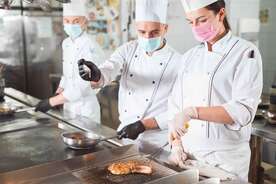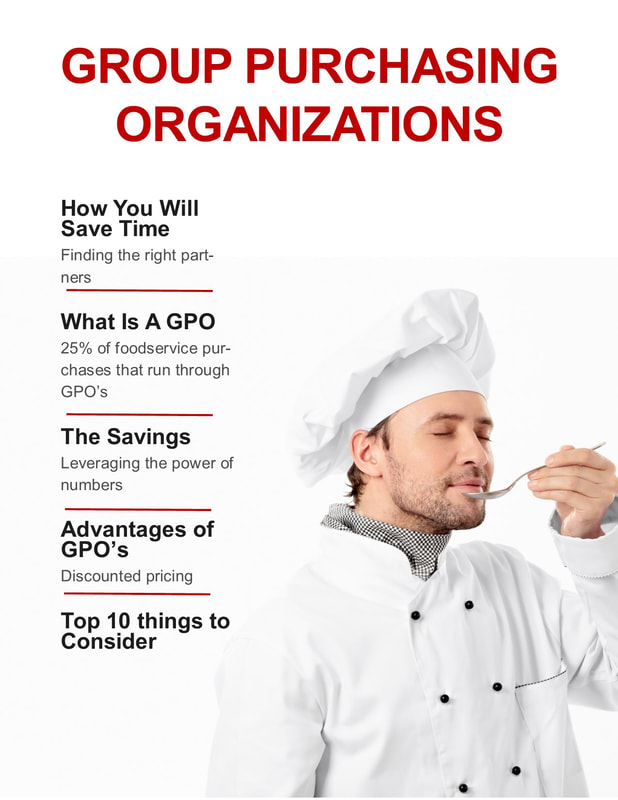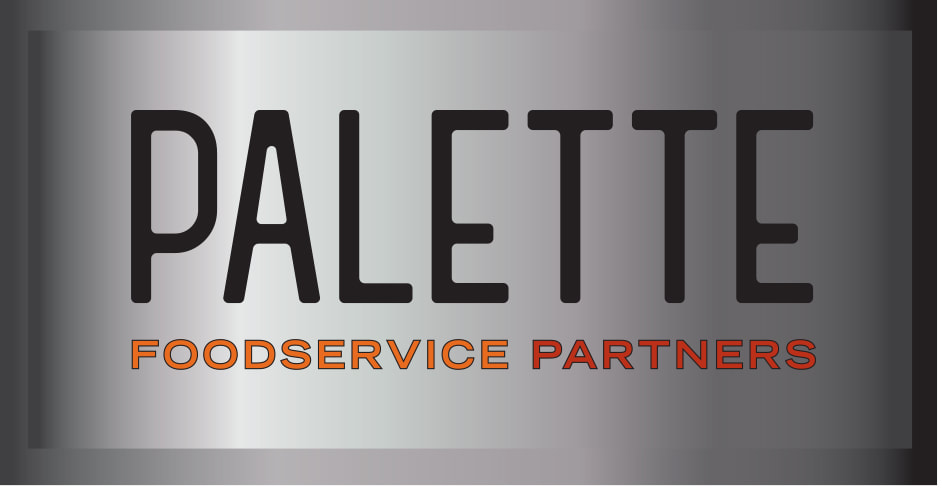 The prospect of a looming recession, along with rising prices on everything from food to fuel, have started to impact how consumers spend – and what budget items they feel they need to adjust to live within their means. While this means people are restricting their spending when it comes to buying takeout food, meals away from home, and travels to far-flung destinations, it also means they are looking to have memorable experiences with friends and family a bit closer to home this year. That’s where there is opportunity for restaurants to fill the gap. Take some cues from Hauste, a new company inspired by meal delivery boxes and motivated by the pandemic-era desire to bring restaurant meals home. As reported by Eater, Hauste develops downloadable dinner party guides – priced at $16 or $26 depending on the size of the gathering – that include a shopping list, menu, recipes, music playlist, design inspiration, checklists, and in some cases, templates for name cards or invitations. What’s more, the guides help the host get organized by breaking tasks down into the days and minutes leading up to an event. If you are a restaurant that prides itself on the in-person experience offered to guests, how can you repackage it as the “staycation” version of that experience? By making it easier for your customers to host a polished, low-stress gathering, you’re also creating opportunities for them to promote you on social media. Socializing and entertainment are still happening right now – and consumers are eager to connect. How can you find new ways to help them gather and celebrate in ways that feel like a great value and can therefore find a place in their budget?  Inflation is a worry for nine out of 10 adults, according to a survey taken recently by the online research firm Momentive for The New York Times. As guests scrutinize more of their expenses, discretionary restaurant spending is a natural place for them to cut back. But on the plus side, demand persists for restaurant food – it may just look different for a while. As John Church, co-head of HSBC Bank’s food and beverage unit, told The Food Institute, “Consumers are likely to trade down during inflationary times as they will want to continue to enjoy some level of out-of-home dining experience.” Restaurant operators may just have to double down on strategies to get guests in the door. Right now, focusing on providing value can help. Offer combo meals that emphasize cost savings – like a family meal deal that may even provide some leftovers for lunch the next day. Create a sense of urgency with guests by creating a rolling line-up of limited-time offers. Give people a reason to return by asking them if they want to receive special offers, then following up with deals related to foods they have enjoyed from you in the past. Take a page from your pandemic playbook and package up an experience – a cooking class or wine tasting, for example – that makes restaurant food or drink feel like a worthwhile outing or a go-to choice for someone looking to give a special gift. When you offer those experiences, talk them up on social media to inspire guests looking for memorable ways to gather with friends and family.  Even before the pandemic, the shift from on-premise to off-premise dining was happening. But the pandemic truly accelerated it, and even as people return to restaurant dining rooms now, there is still a way to go before things look the way they did a couple of years ago. To be sure, the trend is especially stark for full-service restaurants – new data from FSR Magazine indicates that in September of 2019, 80 percent of traffic at full-service restaurants was on-premise (compared to 20 percent for carryout), whereas the mix in September of 2021 was 56 percent on-premise, 44 percent carryout. Still, across restaurant categories, an operator needs to make a clear-eyed assessment of their business model in light of current market conditions, then take steps to protect the business for the long term. That means expanding, not limiting, opportunities to serve guests – and resisting the urge to revert back to how you were operating pre-pandemic. Consider new opportunities for catering, particularly as businesses are looking for ways to maintain connections between hybrid workers and clients. Keep communication open with neighboring restaurants and complementary businesses that may be able to pool resources, share staff, or collaborate with you on promotions. Think about how to make it easier and faster for your food to reach guests who want to eat it off-premise, whether that means assessing third-party delivery providers to find the best-possible arrangement, starting an in-house delivery service or using a ghost kitchen.  Just weeks ago, it seemed like things were back on the upswing for restaurants. Consumers were eager for a return to eating out and anxiety about gathering indoors was waning across the country. But the rapid spread of the delta variant, and a range of state and local responses to it at both the government and consumer level, has added a new wrinkle to pandemic recovery. For restaurants in various parts of the country, this has meant an increase in no-shows, new rules about the need for vaccines, a lack of clarity on the wearing of masks and Covid-related backlash from the public on restaurant review sites. Communication – to your staff and to your guests – is critical right now. Determine what guidelines you must follow to protect the safety of all, then find friendly, non-confrontational, non-political ways of sharing your approach. Continue to offer multiple options for dining and collecting orders. Expect requests for outdoor dining to continue – and prepare now for accommodating guests outdoors into the cooler months. Consider what to do about no-shows – whether it be charging a deposit on a table or asking for a text or email confirmation of a reservation. Update signage on your entrance, website and social media channels with your approach, indicate that it will likely be changing in the coming weeks, and ask for everyone’s patience as you work hard to keep business going in challenging times. If you thought last year was a rollercoaster, this year might be another – with a few more ups and downs instead of a long, gradual drop. As we emerge from the pandemic, the great news is that consumers are excited to support restaurants in a big way: A recent survey of 5,000 consumers by the marketing company Constant Contact found that 44 percent of respondents said restaurants were among the first businesses they plan to return to. Some restaurants, particularly those that have incorporated technology into the day-to-day management of their business, have already experienced record-breaking customer demand (and therefore sales) this year. Of course, we’re not completely in the clear just yet, and a premature return to indoor gatherings could lead to a fourth wave of the virus. How can restaurants manage being in the position of having to rapidly ramp up inventory and staff like never before, navigate potential supply chain shortages, and then have to scale business back down in the event of an uptick in infections? First, be nimble: As you adopt new technology and systems for your business, prioritize those that allow you to make decisions minute to minute. Can your system help you adjust your menu, ordering and staff scheduling if a key ingredient suddenly climbs in price or becomes scarce, if your state reports a spike in infections, or if the weekend forecast is likely to bring crowds to your restaurant? Then keep your back-up plans handy: That means knowing what ingredients can be substituted for others in a pinch, creating multiple points of interest on your menu so people have many reasons to order from you, and knowing which companies can provide temporary workers on short notice for certain roles if you’re faced with sudden spikes in business.
The ghost kitchen segment has plenty of room to grow, with less than 5 percent of restaurants adding delivery from ghost kitchens as an option during the pandemic. These kitchens also boast a range of potential benefits, ranging from improved scalability to decreased overhead costs. After a year in which restaurant operators have been forced to pivot on a daily basis in order to survive, ghost kitchens have become the poster children of flexibility, allowing operators to churn out a rotating range of menu options – often items rarely seen together on a menu – in response to consumer whims. Operators are also uncovering new and often cost-effective places to open ghost kitchens, from college campuses to hotels to really any centrally located space that has a professional kitchen. But just as the pandemic has required the restaurant industry to be flexible in its accommodation of off-premise orders, coming out of the pandemic may require a different kind of flexibility. As this Grub Street report explains, a lot of the magic of eating in restaurants (and the improved quality of the food experienced on-site) just can’t be replicated by the ghosts. While consumers crave convenience, they also appreciate a special experience – communing with others and trying foods they wouldn’t have otherwise considered, which is generally more likely to occur onsite. That may be especially true as people look to make up for lost time after a year spent close to home and away from gatherings (according to a new report from Paytronix and PYMNTS, more than two-thirds of the restaurant food ordered last year was eaten at home). So going forward, whether you’re considering new real estate, kitchen equipment or ingredients, look for flexibility: As you shift your operations to support off-premise sales, consider the potential that you might want to shift back.
Some aspects of restaurant dining have seemed to become ancient history in the pandemic era. Case in point: It’s hard to imagine when the salad bar or buffet line will make a widespread comeback. But the equipment that made those kinds of services possible remains. So, like so many other areas of restaurant service right now, it’s time to reinvent it. Campbell’s has done just that by updating its self-service soup stations: In the current environment, they suggest placing a warming plate over soup wells and then lining up pre-packaged containers of soup for customers to collect, or (as a space-saving solution that also accommodates longer hold times) using a multi-tiered warming cabinet that can also be placed over existing soup wells and holds containers of soup to-go in various sizes. Both options enable easy soup collection by customers. They also allow easy replenishment of product from the back of the house – either by filling the cabinet with additional pre-poured containers of soup stored in a larger enclosed warming cabinet in the back, or by pouring more servings as needed from tureens behind the counter and adding them to the containers awaiting collection by customers. These new solutions from Campbell’s weave in some other benefits related to food safety, waste management and customer satisfaction too. Each soup container can be sealed with a sticker to boost customer confidence in the security of the soup they are about to consume. Further, the containers allow for precise pouring of soup in various sizes to help prevent accidental overpouring. Finally, serving from pre-portioned containers allows you to offer size options beyond the traditional two. Selling a few size options not only appeals to customers, but it can also help you craft new combo promotions to elevate check totals. Check out Foodservice CEO to find out about all the Cambpell’s self serve solutions at https://www.foodserviceceo.com/self-serve-solutions.html
No doubt, the past year has been more difficult for restaurants than we care to think about. But the turning of foodservice on its head hasn’t been completely bad. In fact, it has opened some doors – particularly for nimble, entrepreneurial operators who have a knack for posting enticing food photos on social media and the ability to use tech to set up ordering and delivery. As the New York Times reported recently, there has been an explosion of inventive take-out food concepts on Instagram lately as foodservice operators have begun promoting small, rotating, deliverable menus on the platform – and with success. Some of these concepts are based on ideas that chefs have dreamed of trying for some time, but others are simply a temporary means of keeping money flowing in to pay employees, cover rent and essentially stay in business in some form until the pandemic winds down. Some chefs are even working out of simple home kitchens. Whether you’re in the position to try pop-up concepts like this or not, they are evidence of the newly stripped-down list of resources a restaurant truly needs to function, which are important to remember for the long term. Operating a restaurant is no longer about real estate but about being able to reach your customers where they are – and using the range of tools at your disposal to help. First, focus on making it easy and fast for customers to order from you online. Think about how you can profitably get food to customers – whether by aligning with a third-party vendor, offering a scheduled weekly drop-off of food (ready to eat right away or freeze), or even just making curbside pickup more appealing. Mix up your menu and promote the changes online – when you rotate new items through on a regular basis, you give your customers a reason to look for your updates each week and you naturally create new reasons to post those updates on your social media, website and email newsletter. Finally, take food photos that sing. You can do this on your mobile phone – just opt for warm, natural light, use a reflector or simply a light piece of paper to soften shadows, use color and contrast to make the food pop in the image, and add some simple decorative (or brand-specific) elements to elevate viewers’ perceived experience of eating your food.
Of all restaurant segments, fine-dining restaurants have arguably met with the most challenges in the past year as many of their hallmarks – from a sole focus on in-dining-room service, to higher-touch interaction with staff – became safety hazards practically overnight. But like much of the restaurant industry, there are disruptors within it who are transforming the experience of fine dining for the current times. One new concept, dubbed The Finishing Gourmet, aims to replicate the experience of fine dining in a home-based setting. Restaurant Hospitality reports that a former Four Seasons executive chef is part of the team that conceived the business, which includes the in-house delivery and upscale presentation of high-end foods that are ready (or very nearly ready) to be eaten, along with such additions as complimentary steak knives and even a chef’s torch to add the finishing touches to a crème brulée. The foods are intended to be delivered contactless and, unlike a meal kit, may require just a few minutes of cooking by a home chef (to sear a steak, for example). If your business once relied on in-dining-room service and prided itself on its human touch, how can you offer those benefits to people at home? Taking cues from catering businesses and meal-kit companies may help you identify new hybrid approaches to recreating the experience of dining in your restaurant – or delivering something close to it.
Like constant change? Probably not. Even for those who are more comfortable with change, the past year has likely forced too much of it. But what if you could adjust your mindset and your business so that you could better weather, anticipate and (perhaps) even welcome change? A September TD Bank survey of 250 restaurant operators around the U.S. aimed to take the pulse of the industry and find out what strategies have worked for restaurants that have managed to succeed in such a tumultuous year. Three key findings emerged: Off-premise sales are critical and restaurants need to be able to accommodate them (particularly via such consumer conveniences as mobile ordering and delivery). Payment methods including mobile, online and contactless are helping restaurants encourage consumer confidence. Finally, many of the traditional physical characteristics of restaurants are changing to accommodate drive-thrus and pick-up areas, shift to ghost-kitchen formats and decrease overall footprints. So how can this information help restaurants set themselves in a more powerful, less reactionary position for the future? First, scrutinize your off-premise menu and sales to ensure they are practical and profitable. Then adjust. Get comfortable trying new ideas regularly – it will not only help you see what works and what doesn’t, but it will also give you something new to promote to customers. Next, evaluate your payment methods: Do they help you limit face-to-face interactions with customers and also enable you to expedite payment and get a faster, clearer picture of your sales? Finally, take advantage of this time of disruption. Look for new partners and investors, and talk to bankers, landlords and suppliers to identify opportunities to secure more beneficial arrangements.
|
Subscribe to our newsletterArchives
April 2024
Categories
All
|










 RSS Feed
RSS Feed